The Kholey Dai Festival is the time of year when I step away from my everyday life to embark on a journey that allows me to embrace new learnings and perspectives, shaping who I am becoming. Parengtar is nestled near the Indo-Bhutan border in Kalimpong district, West Bengal. Every year, with the arrival of the harvest season, the village comes alive with the rhythms of traditional songs and the aroma of paddy-laden fields. The winter sun in the clear blue skies above the dusty, golden fields encourages one to slow down, embracing the culture and community that warmly host the harvest celebrations. For many, the journey to Parengtar is an annual homecoming. Some even stay for weeks before the festival, engaging in community work.
The resurgence of cultural festivals like the Kholey Dai is deeply rooted in the need to reclaim indigenous traditions, once on the verge of fading away.
The resurgence of cultural festivals like the Kholey Dai is deeply rooted in the need to reclaim indigenous traditions, once on the verge of fading away. As globalisation accelerates, many rural communities find themselves at risk of cultural homogenisation. This grassroots festival serves as a means to strengthen local identity and foster a sense of belonging among younger generations. What once was solely a harvest tradition has now become a glocal1 confluence of people from diverse backgrounds, enabling cultural revivalism, responsible tourism, and youth-driven change. In an era of rapid environmental and economic shifts, ‘cultural revivalism’ isn’t just about heritage; it is also about resilience, sustainability, and reclaiming agency over one’s history and future.
The Origins: Reviving Culture through Collective Action
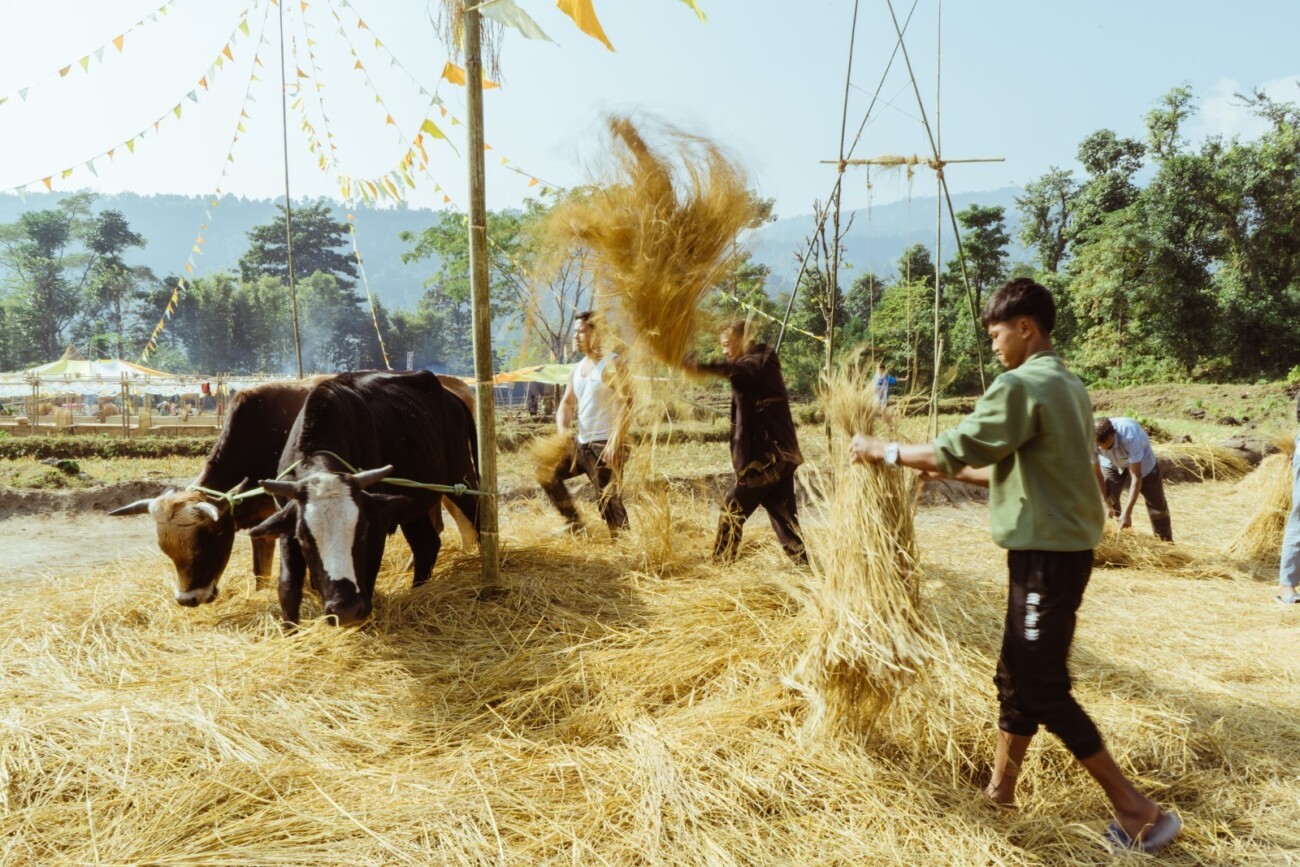
A two-fold strategy drove the revival of this festival. The host community aimed to reconnect with its traditional roots while leveraging the festival as a means of economic and social empowerment. Meanwhile, external facilitators and collaborators sought to create a model of ‘responsible tourism’, where visitors could engage deeply with the community while ensuring their presence contributed positively.
Agriculture is the lifeline of Parengtar’s community. For generations, the end of the sowing and harvest seasons was marked by a collective celebration, a time when villagers gathered to sing, dance, and feast in gratitude for nature’s abundance. However, with economic shifts and modernisation, these traditions began to fade. Recognising the urgency to preserve Parengtar’s cultural identity, local youth and elders came together to revive traditional practices, starting with the Asaar Pandhra, a celebration of the sowing season. In 2020, Dominic Rai, a youth from the neighbouring village Paren, alongside Parengtar’s Roshan Rai, mobilised people to celebrate Asaar Pandhra on a collective scale for the first time. A year later, they crossed paths with Arunavh Dam and Vicky Sharma, forming ‘Muhaan’, a youth collective based in Samsing, Kalimpong. ‘Muhaan’ then collaborated with ‘Café Kalimpong’ led by Praveen Chettri. In 2021, the Parengtar Nawlo Umang Welfare Society was also established with the aspiration of providing holistic welfare to the village through sustainable livelihood initiatives. They also aim to enhance youth involvement in Parengtar and participate in attaining the UN Sustainable Development Goals through grassroots initiatives. A two-fold strategy drove the revival of this festival. The host community aimed to reconnect with its traditional roots while leveraging the festival as a means of economic and social empowerment. Meanwhile, external facilitators and collaborators sought to create a model of ‘responsible tourism’, where visitors could engage deeply with the community while ensuring their presence contributed positively. The synergy between local stakeholders and external collaborations has allowed the festival to expand its impact while staying true to its original essence. All the above created an aligned mission to revive the fading traditional celebration of Dai, giving birth to the Kholey Dai Festival.
A Village with a Vision

Photo Courtesy: Kholey Dai Festival
One key objective of the community is to bridge the generational gap, ensuring that traditional knowledge and practices are embraced and preserved by younger generations.
At its heart, Kholey Dai Festival is only the pinnacle of a year-long community-driven initiative intertwining biocultural conservation with sustainable innovation. The festival serves both as a celebration and a movement, with year-round initiatives aimed at preserving Parengtar’s cultural heritage, enabling socio-economic progress, safeguarding environmental sustainability, and upholding social innovation. One key objective of the community is to bridge the generational gap, ensuring that traditional knowledge and practices are embraced and preserved by younger generations. The festival also champions ‘responsible tourism’ as a means of empowerment, generating alternative livelihoods for the locals. Through curated experiential learning workshops and programmes, the village has become a living classroom where history, agriculture, and culture merge seamlessly. By inviting creative practitioners, thematic experts alongside youth from across India, Nepal, and parts of Southeast Asia, the festival has transformed Parengtar into a model village for responsible rural tourism, proving that cultural preservation and socio-economic development can go hand in hand.
Life in Parengtar
Everyday life in Parengtar is far from the romanticised outlook but a sufficient life. One can wake up early in the morning and join the khetalas (farm labourers).
Located in Kalimpong, nestled between the Neora Valley National Park, Sikkim, and Bhutan, Parengtar gets its name from the unique landscape- ‘Paren’ meaning bamboo and ‘Tar’ meaning flat land, which lies among steep ridges and mountains. The village is home primarily to the Rai community. Everyday life in Parengtar is far from the romanticised outlook but a sufficient life. One can wake up early in the morning and join the khetalas (farm labourers). Field work concludes with a bhoj offered by the host family in exchange for the labour provided. This is a traditional yet dying practice called parma, a barter system among farmers where field labor is exchanged without monetary transactions but with a collective spirit. The community also practices shramdaan (voluntary community work) every Sunday, with activities like clean-up drives, road construction, and house building. Additionally, they also come together to provide financial support to families with patients. Parengtar predominantly has a young school-going population but is also home to a few elders known as ‘knowledge keepers’, rich in oral narratives passed down through generations. The immersive journey into the life and culture of Parengtar is best experienced days before the actual festival, when visitors can also contribute to social work and aid in festival preparations.
Field work concludes with a bhoj offered by the host family in exchange for the labour provided. This is a traditional yet dying practice called parma, a barter system among farmers where field labor is exchanged without monetary transactions but with a collective spirit.
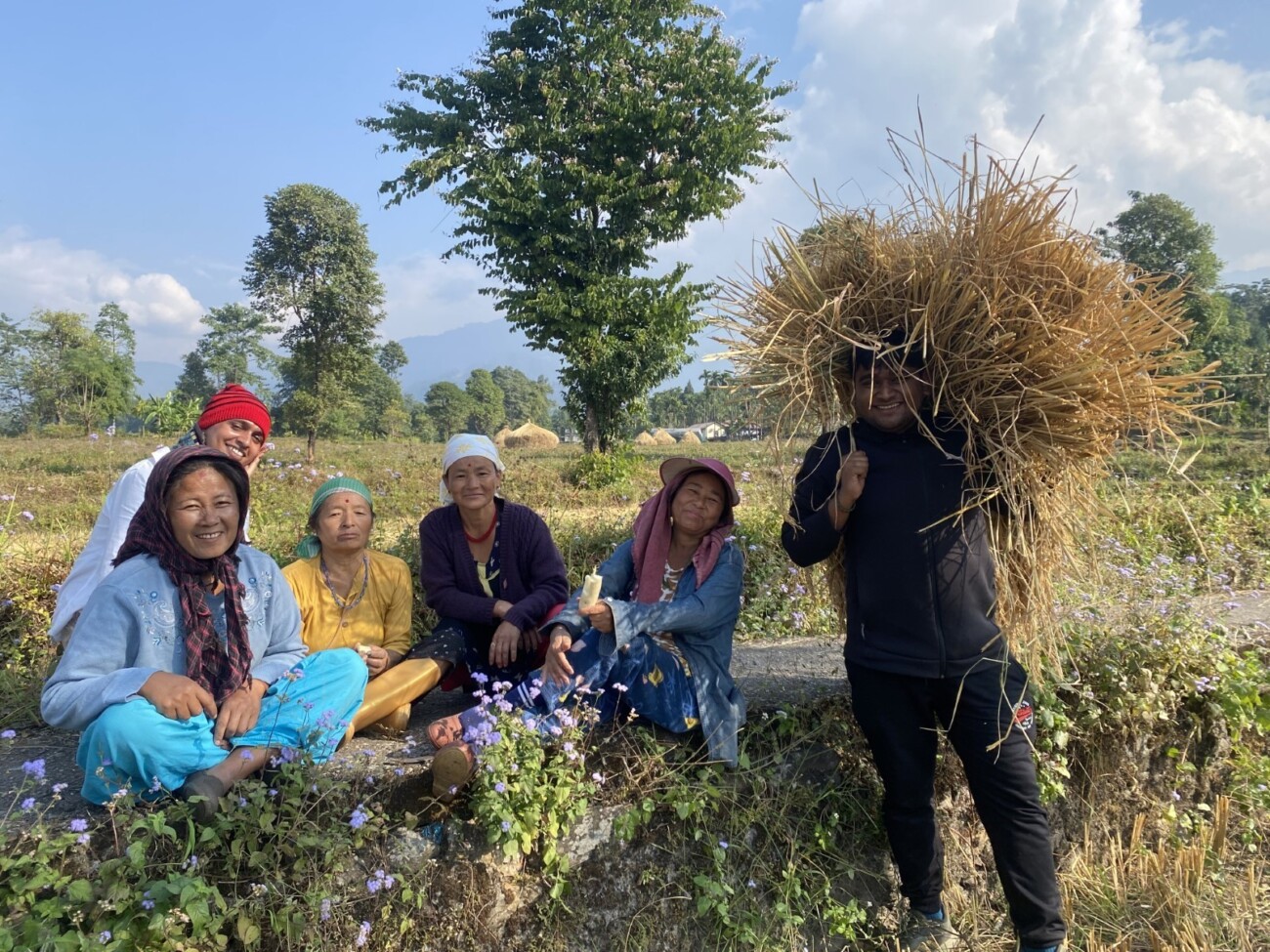
The Experience: Three Days of Community, Culture, and Art
For attendees, the Kholey Dai Festival is a three-day sensory experience that immerses visitors in the rhythms of rural life and cultural heritage.
The growth of the Kholey Dai Festival has been an organic and collective journey. It began with a small group of people passionate about cultural preservation, gradually gaining momentum as more individuals and organisations joined. Year after year, the festival evolves, incorporating new elements such as skill-sharing workshops, live art performances, and sustainability dialogues. Each edition builds upon the last, ensuring that the festival remains dynamic while rooted in tradition. For attendees, the Kholey Dai Festival is a three-day sensory experience that immerses visitors in the rhythms of rural life and cultural heritage.
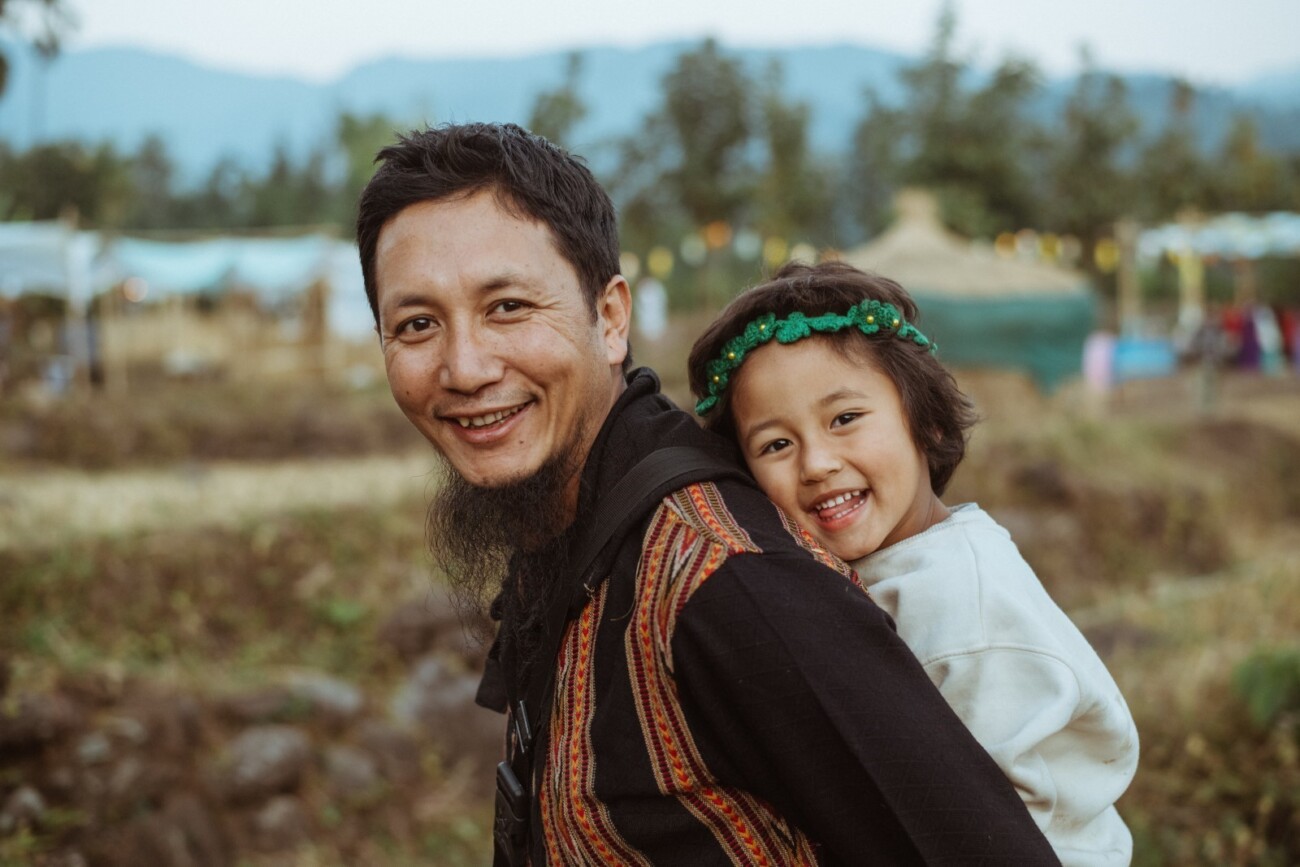
Afternoons can be spent basking in the sun with village elders, who share oral histories of hardships, cross-border love stories, folklore, and myths. As the sun sets, the festival transforms into a space of warmth and camaraderie, with bonfire sessions where visitors, musicians, and community storytellers gather, often from dusk till dawn.
Guests can explore the village through guided walks, swim in the pristine river or streams, and even contribute as a khetala (farm labourer). For birdwatchers, early morning walks offer serene encounters with the vibrant biodiversity of the Neora Valley forests. Afternoons can be spent basking in the sun with village elders, who share oral histories of hardships, cross-border love stories, folklore, and myths. As the sun sets, the festival transforms into a space of warmth and camaraderie, with bonfire sessions where visitors, musicians, and community storytellers gather, often from dusk till dawn.

The festival venue is a paddy field set against the breathtaking backdrop of the Neora Valley National Park. Here, alongside folk and contemporary musical acts, traditional dance performances from diverse eastern Himalayan communities take centre stage. Showcasing the rich cultural diversity of the region, with performances from Kirati and Khas groups, including the Rais, Limbus, Lepchas, Newars, Sherpas, Bhutias, Santhals, and Mangars.
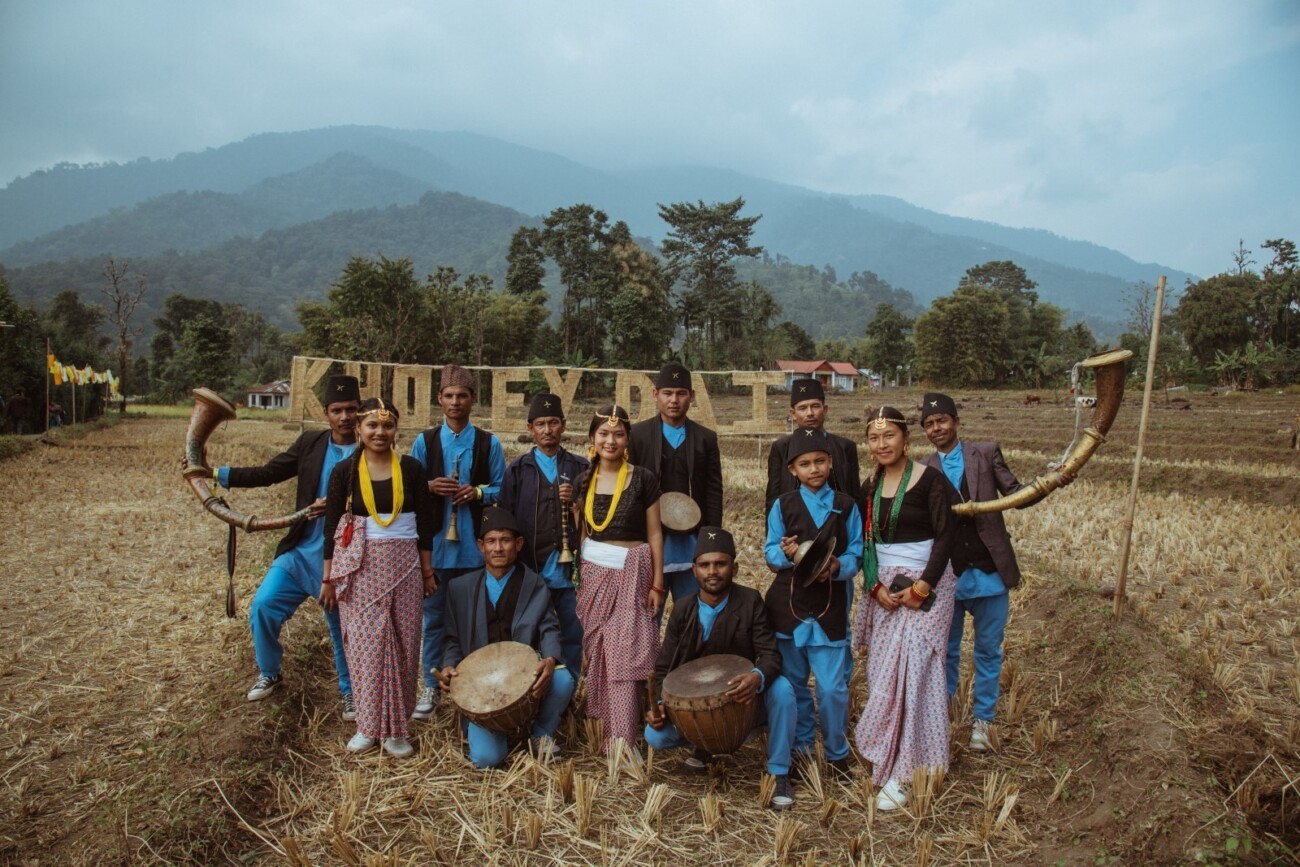
The festival venue is a paddy field set against the breathtaking backdrop of the Neora Valley National Park. Here, alongside folk and contemporary musical acts, traditional dance performances from diverse eastern Himalayan communities take centre stage.
Over the years, the festival has hosted renowned artists such as Bipul Chettri, Purna Rai, Night, Barta Gandharba, Jhuma Limbu, Sofiyum, and Gauley Bhai, as well as emerging local artists from Parengtar and nearby regions, including Anjali Rai, Henry & Charles Rai, Prajit and Sanghi, Ashok School of Music, House of Music, and Tabernacles. The goal of bringing everyone onto one stage is to inspire local youth to embrace their talents and cultivate a sense of belonging.
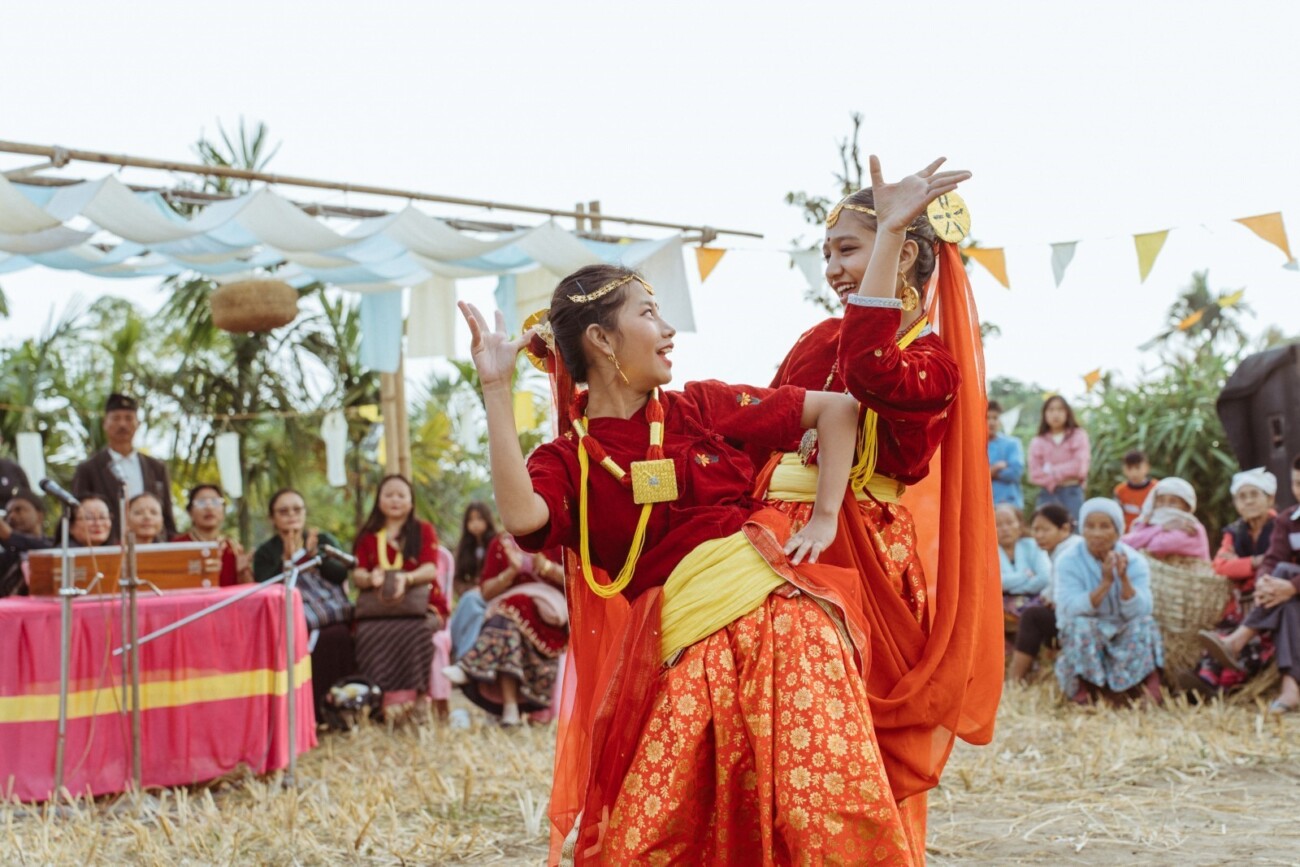
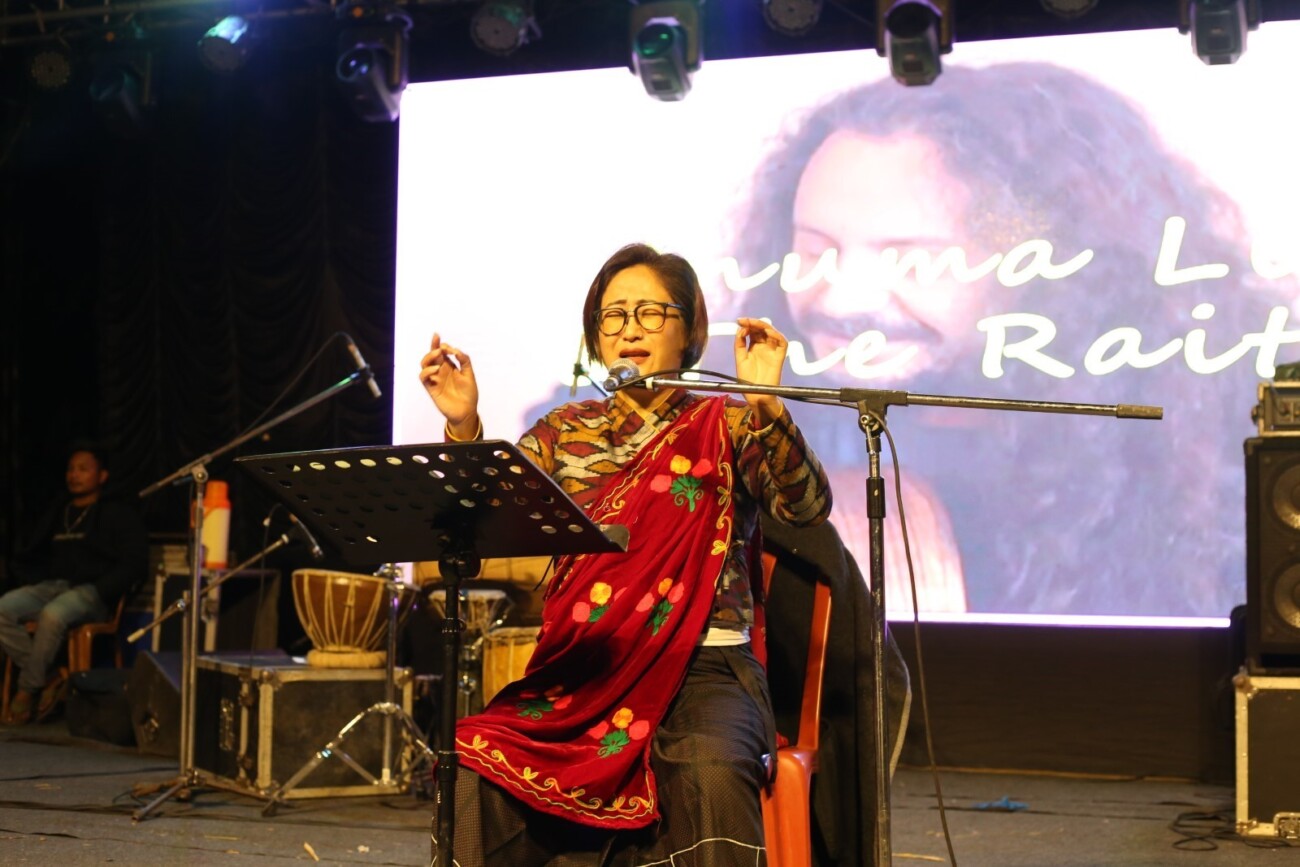
Photo Courtesy: Kholey Dai Festival
A Celebration of Local Traditions
The fourth edition of the Kholey Dai Festival in 2024 introduced interactive workshops on community-centric sustainable farming, indigenous crafts, waste management, and thematic sessions on gender, menstrual health, and more.
The food stalls at the festival are a tribute to Parengtar’s culinary heritage, offering homemade delicacies like kinema (fermented soybeans), sel rotis (traditional rice bread), and a variety of food and beverages made from rice and kodo (millets).

Additionally, stalls for artists, entrepreneurs, and agro-based producers create a marketplace that fosters knowledge exchange and networking. A traditional agricultural museum showcases the annual farming cycle, displaying a diverse range of seeds, crops, and tools used at every stage, from sowing to harvest.
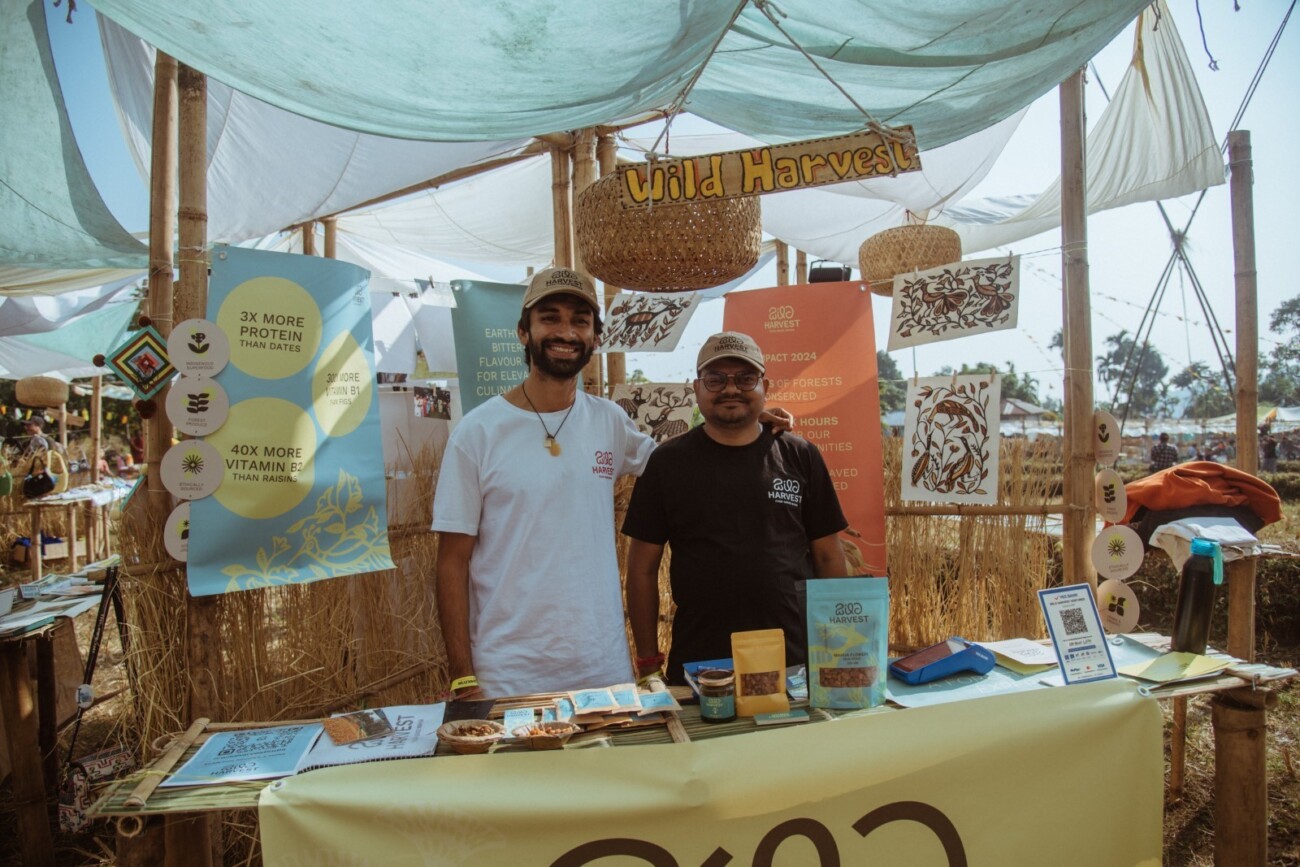
The fourth edition of the Kholey Dai Festival in 2024 introduced interactive workshops on community-centric sustainable farming, indigenous crafts, waste management, and thematic sessions on gender, menstrual health, and more.
Dialogue on traditional knowledge and practices
Zook's sessions with the Parengtar community and visitors explored indigenous cultures, the preservation of traditional knowledge and technologies, and strategies for adapting to an increasingly globalised world.
The festival featured renowned experts such as Rico Zook, a permaculturist who collaborates with communities and organisations worldwide to develop environmentally and culturally sustainable life systems. His sessions with the Parengtar community and visitors explored indigenous cultures, the preservation of traditional knowledge and technologies, and strategies for adapting to an increasingly globalised world.

Another key speaker was Sailesh Awate, co-founder of OOO Farms, who advocates for sustainable, chemical-free agriculture to empower Indian farming communities. He spoke about reviving indigenous seeds and traditional farming practices to produce high-quality grains like rice, dals, and millets.
Another key speaker was Sailesh Awate, co-founder of OOO Farms, who advocates for sustainable, chemical-free agriculture to empower Indian farming communities.
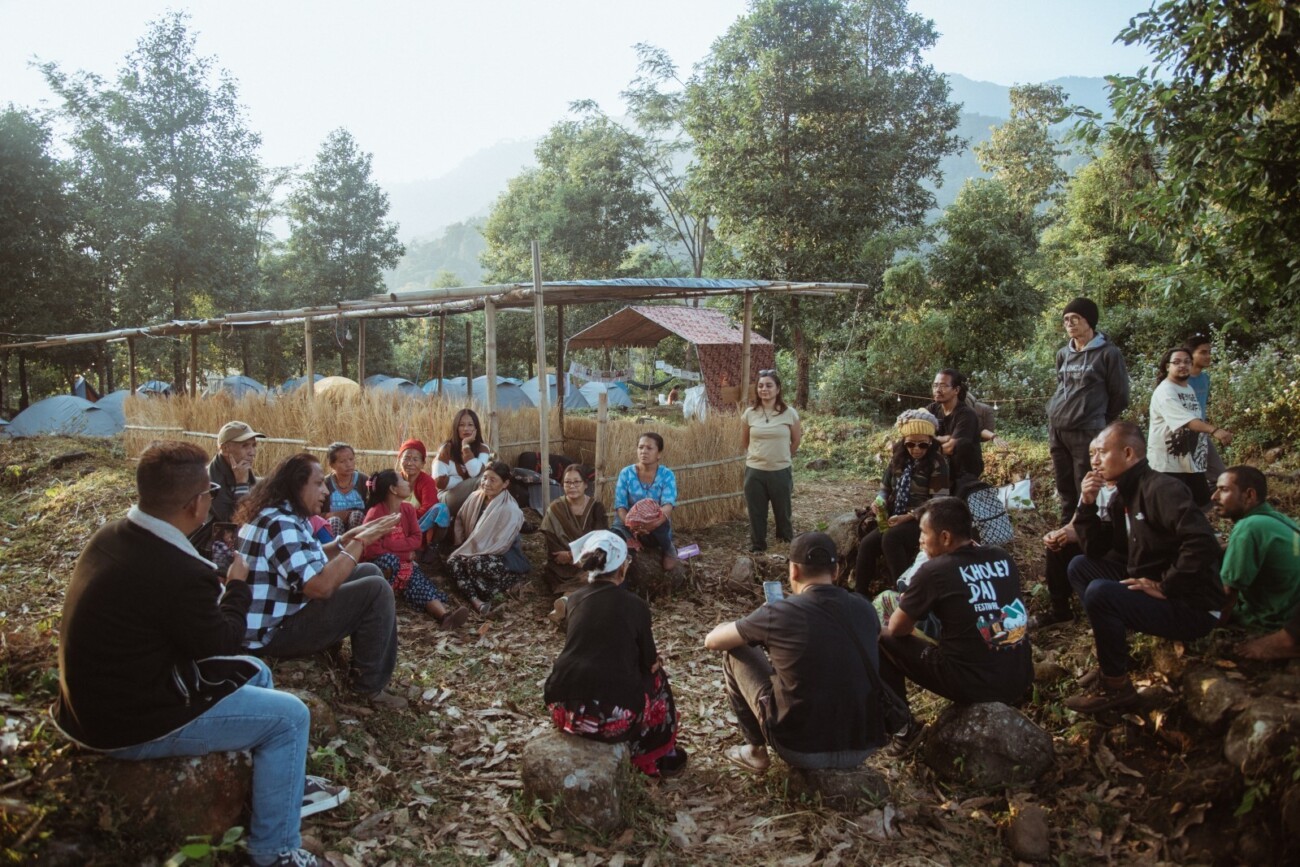
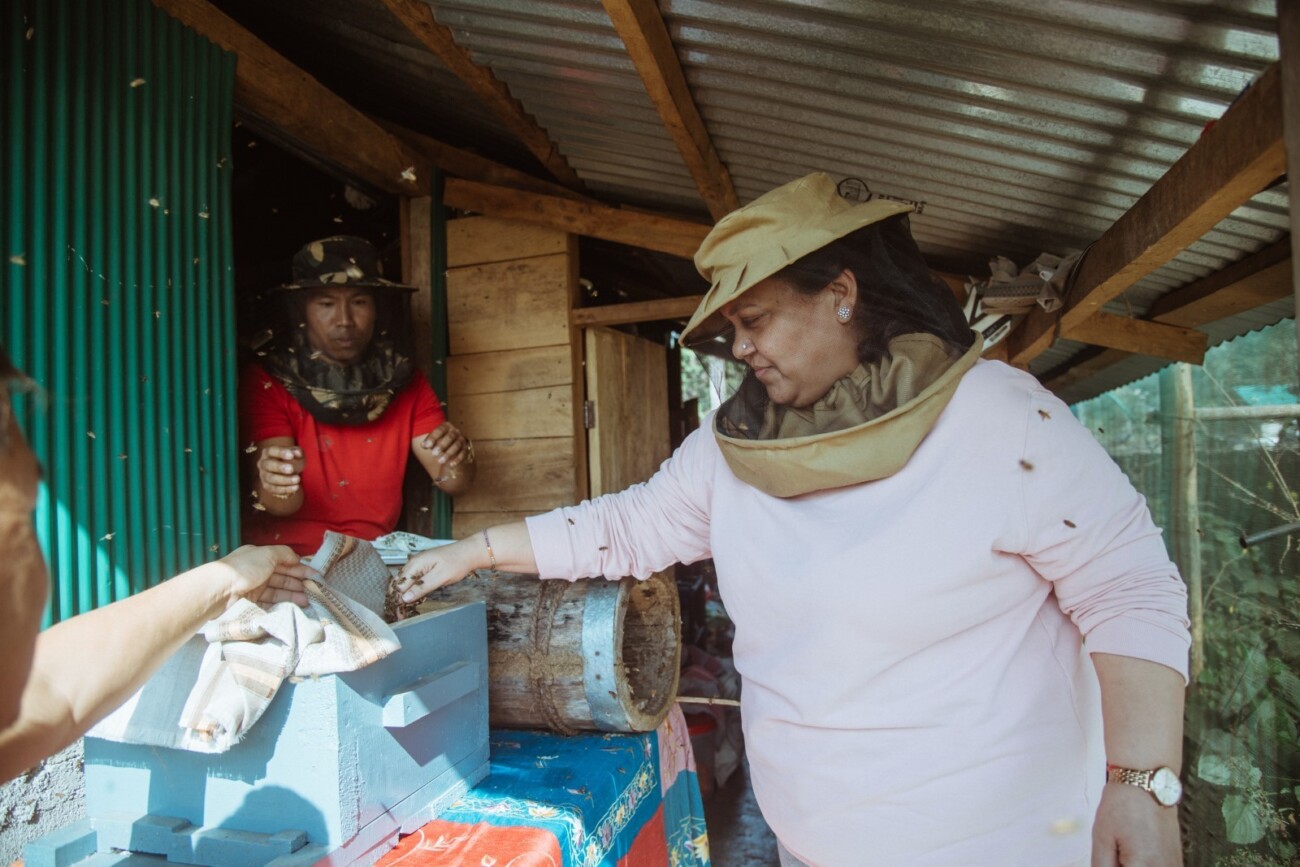
Artistic Expressions for All
Art and craft workshops are another highlight, with sessions conducted by Nepal’s ‘Dehi Arts’ and Darjeeling’s ‘Flowstate’.
Art and craft workshops are another highlight, with sessions conducted by Nepal’s ‘Dehi Arts’ and Darjeeling’s ‘Flowstate’. This year, Clay Workshops were introduced for both children and adults, facilitated by the ‘Gathan Collective’. Additionally, Maria Magdalena Malenta, a Polish visual artist based in Sikkim, led a ‘Neurographic Art Workshop’, offering participants a deeply meditative and introspective artistic experience.

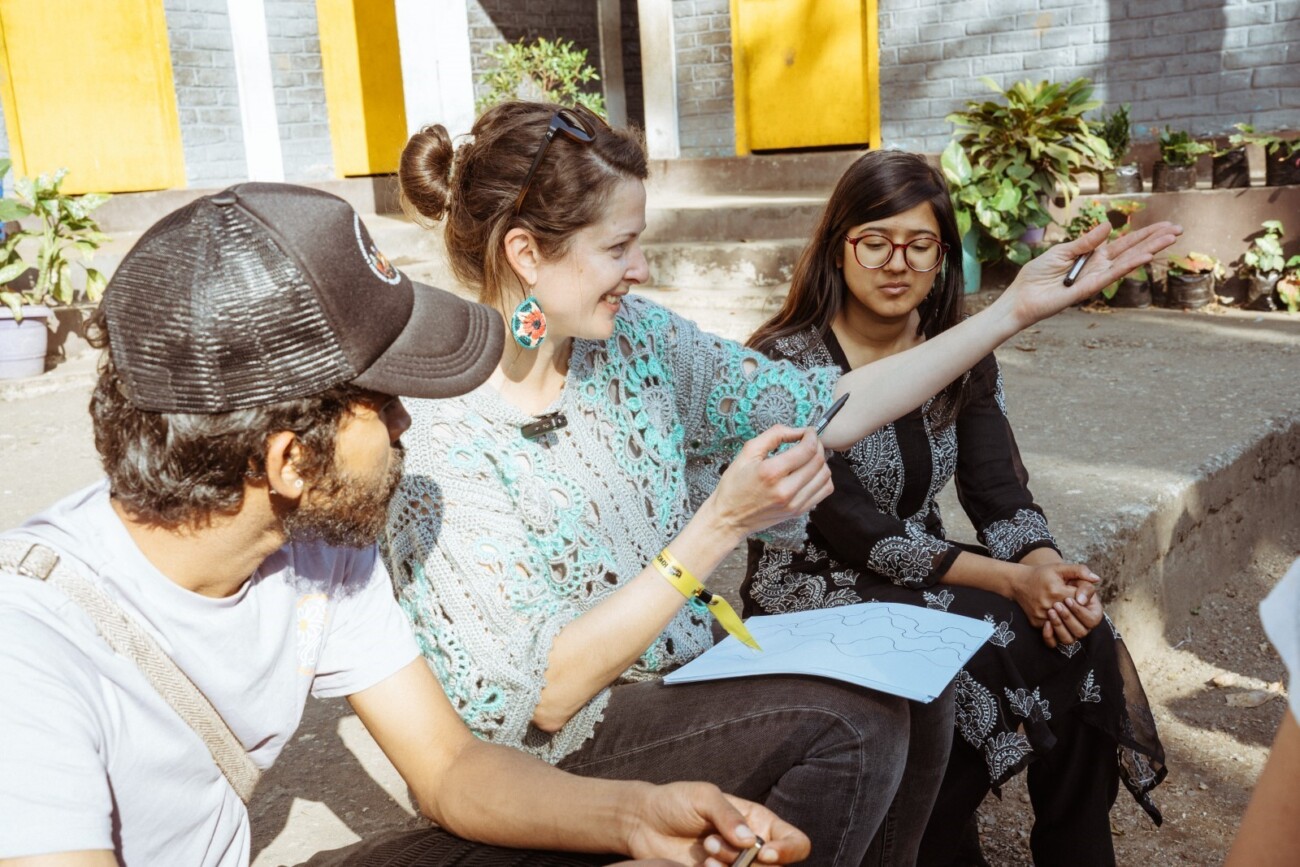
Sustainability at its Core
True to its zero-waste, plastic-free ethos, the festival champions traditional eco-friendly practices, using locally sourced natural materials, reusable resources, and sustainable methods.The entire festival infrastructure is crafted exclusively from bamboo, hay, and naturally dyed fabric. This vision has been brought to life through remarkable collaborations with expert architects and designers from Studio Interweave, Windhorse, and Office of Emergent Practices.
True to its zero-waste, plastic-free ethos, the festival champions traditional eco-friendly practices, using locally sourced natural materials, reusable resources, and sustainable methods.

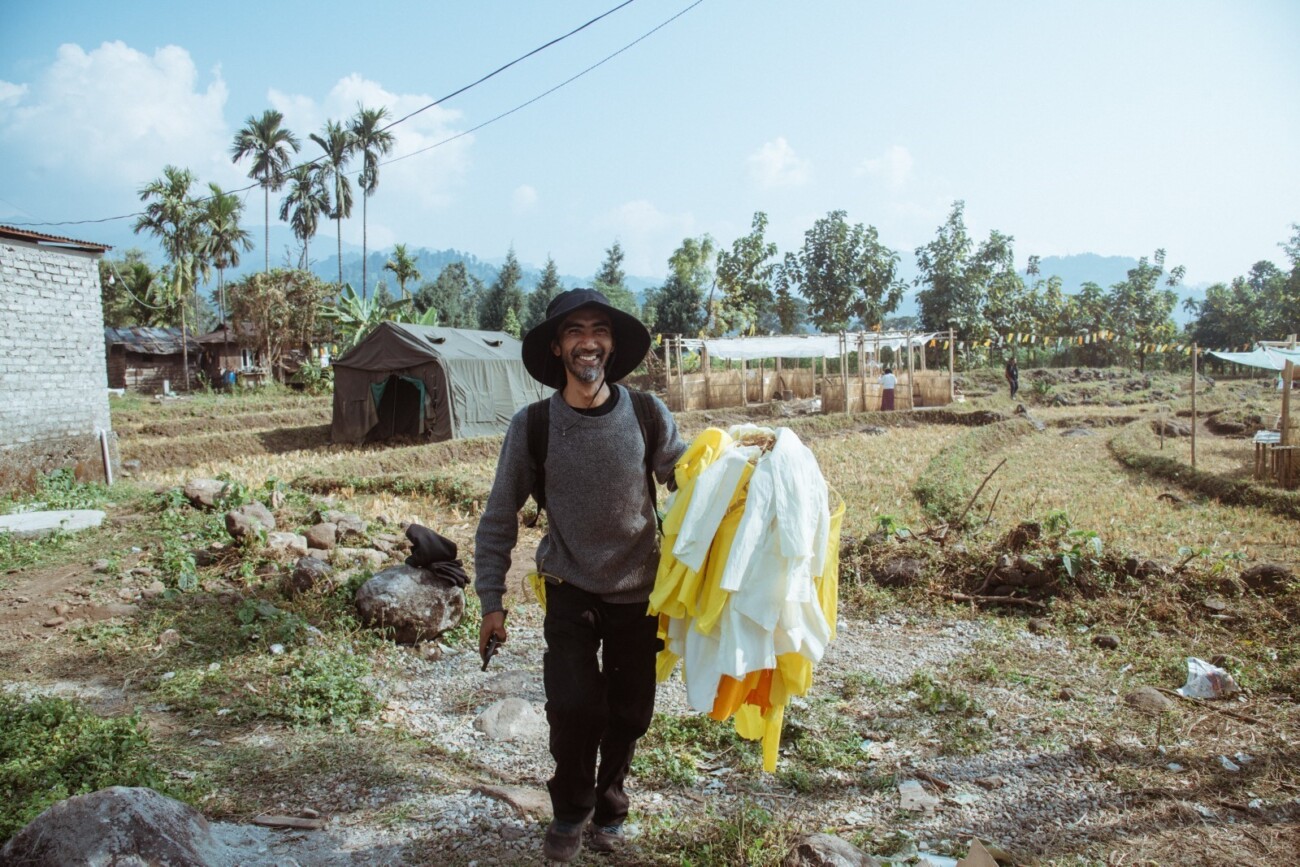
Empowering the Youth: Drivers of Change
A defining feature of the Kholey Dai Festival is its commitment to youth empowerment. Over the years, the festival has provided local youth with invaluable hands-on experience in community mobilisation, event management, and responsible tourism. Youth volunteers from Parengtar and neighbouring villages take the lead in festival operations through coordinating logistics, designing waste management systems, crafting decor, and facilitating cultural exchanges.
In 2024, the festival introduced the ‘Threads of Change’ program, bringing together 13 young aspiring ‘Community Weavers’ from North and Northeast India. This initiative fostered a meaningful knowledge exchange, particularly with the local youth of Parengtar.
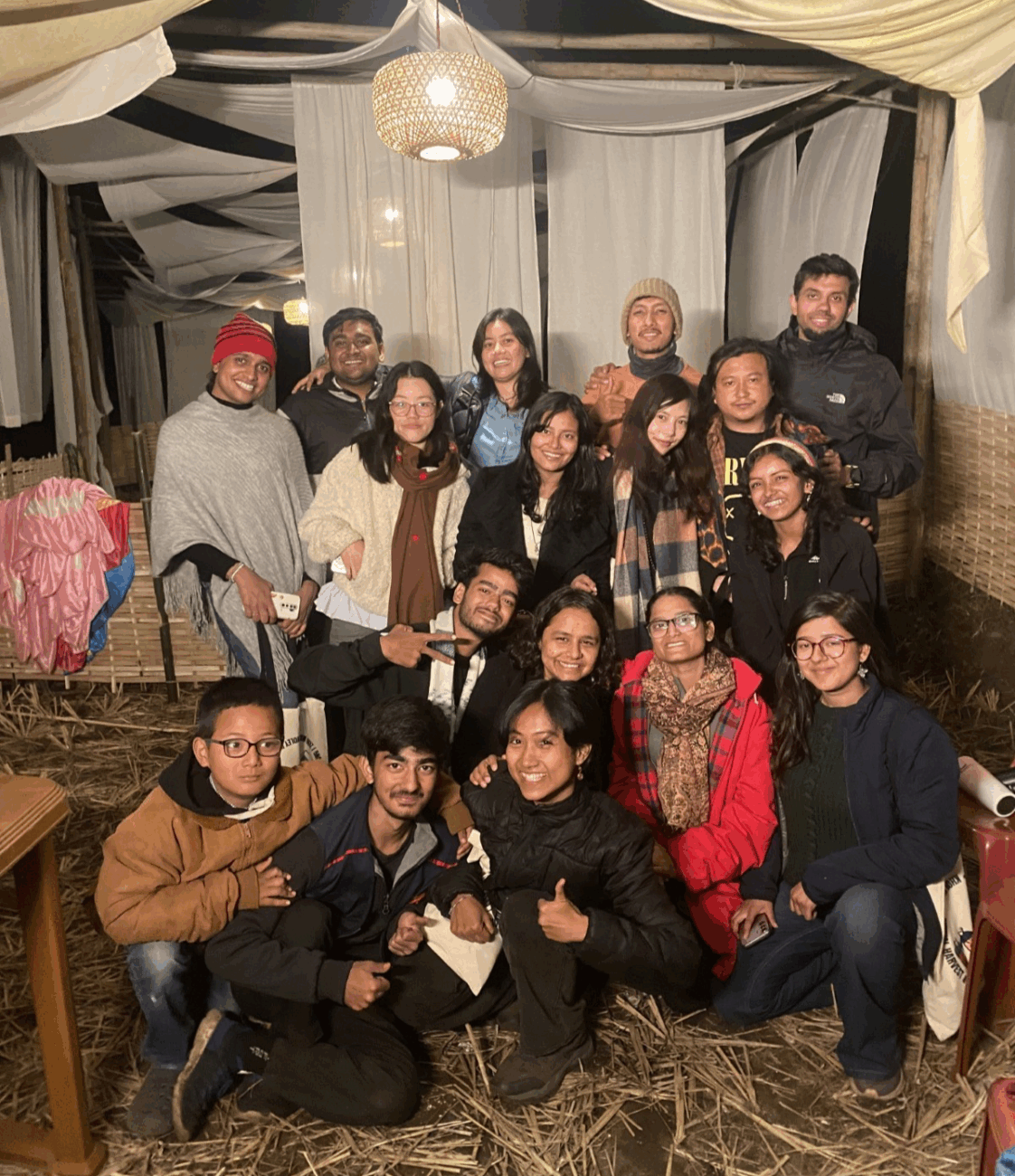
In 2024, the festival introduced the ‘Threads of Change’ program, bringing together 13 young aspiring ‘Community Weavers’ from North and Northeast India. This initiative fostered a meaningful knowledge exchange, particularly with the local youth of Parengtar. As part of its mission to drive innovation in sustainability, the program aims to cultivate a new generation of young leaders through immersive journeys that equip them with critical knowledge, skills, and attitudinal shifts for community-based leadership.
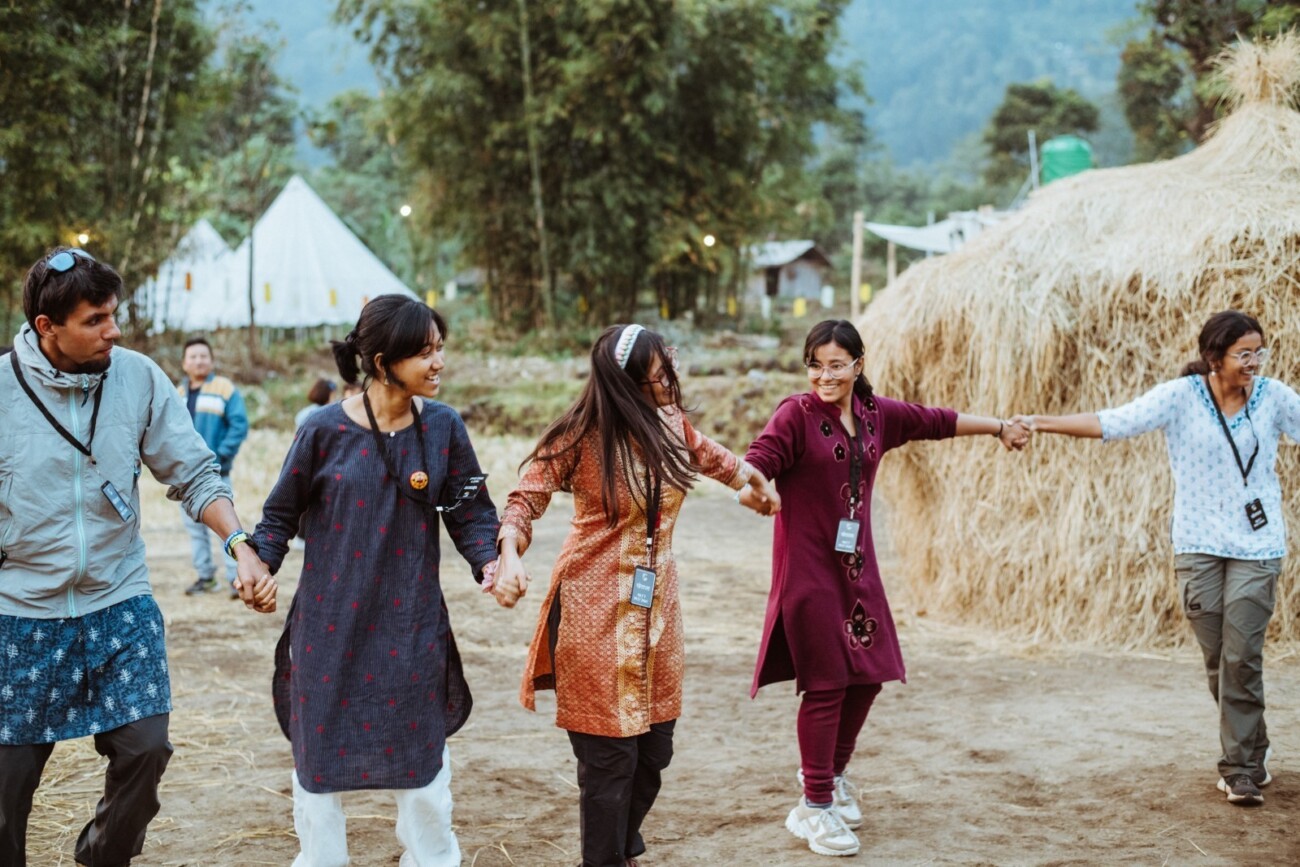
This experiential learning extends far beyond the festival. The Community Weavers return to their communities as nurturing proactive citizens who uphold cultural and environmental sensitivity alongside championing simple, innovative, and sustainable solutions.
This experiential learning extends far beyond the festival. The Community Weavers return to their communities as nurturing proactive citizens who uphold cultural and environmental sensitivity alongside championing simple, innovative, and sustainable solutions. The festival also integrates intergenerational dialogues and thematic workshops on mental health, gender rights, and environmental sustainability, creating a space for critical conversations that expand its impact beyond cultural revivalism. We witnessed these aspiring changemakers diversely engaging with the community on multiple levels, especially with village elders, local youth, and children, exploring key themes such as health, livelihoods, education, agriculture, climate resilience, and traditional knowledge. Additionally, they organised a youth campaign for the ‘16 Days of Activism’, a global movement against gender-based violence that annually takes place from 25th November to 10th December. It was interesting to see how they curated this campaign within the cultural and social context of Parengtar, making it an inclusive movement across all age groups. One of the fellows, Nitin, organised a survey and conducted a workshop titled ‘Rainbow Skies’ for the queer community during the festival, further highlighting the festival’s commitment to inclusivity.
We witnessed these aspiring changemakers diversely engaging with the community on multiple levels, especially with village elders, local youth, and children, exploring key themes such as health, livelihoods, education, agriculture, climate resilience, and traditional knowledge.
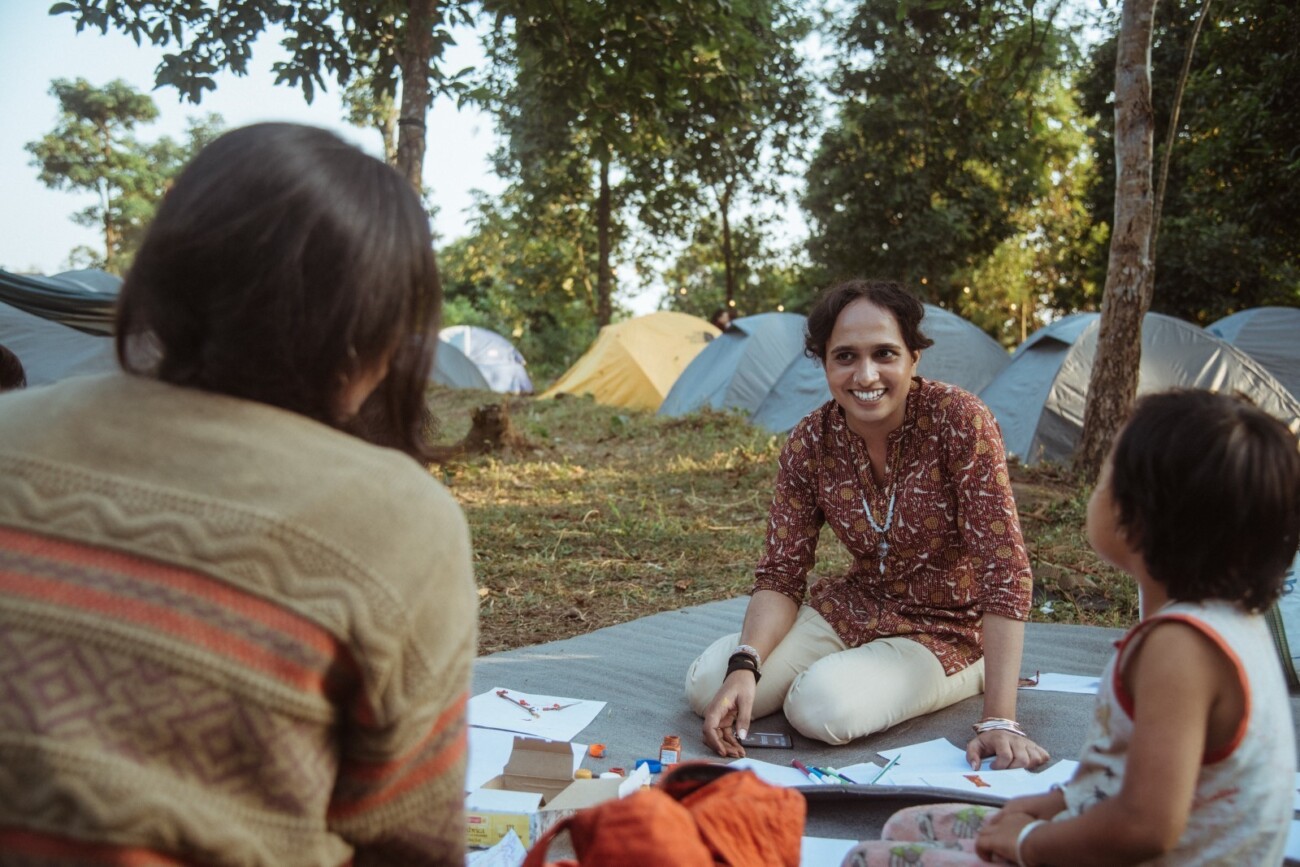

The Threads of Change cohort, along with the local youth, also initiated a fundraising campaign within the festival. They set up a stall featuring nostalgic childhood games with pea shooters, sold lemonade, showcased artwork, and offered caricatures or Polaroid photos to raise funds for various community initiatives.
Towards a Resilient Model Village
In its evolution, Parengtar has transformed into a ‘glocal’ community where local traditions seamlessly integrate with global perspectives, offering a compelling blueprint for rural areas striving to balance progress with heritage conservation.
The responsible tourism model featuring the Kholey Dai Festival has brought tangible benefits to Parengtar over the years. The rise in visitors has boosted local homestays, creating sustainable income opportunities for families, while the revival of forgotten traditions has ensured the preservation of indigenous knowledge for future generations. At the same time, the festival’s commitment to sustainable tourism has positioned Parengtar as a model for environmental stewardship, inspiring other villages to adopt similar eco-conscious practices. In its evolution, Parengtar has transformed into a ‘glocal’ community where local traditions seamlessly integrate with global perspectives, offering a compelling blueprint for rural areas striving to balance progress with heritage conservation.

The Power of Collaboration
The Kholey Dai Festival is a testament to the power of collective effort, bringing together individuals, enterprises, and organisations committed to the community’s aspirations for cultural preservation, rejuvenation, and sustainability.
The Kholey Dai Festival is a testament to the power of collective effort, bringing together individuals, enterprises, and organisations committed to the community’s aspirations for cultural preservation, rejuvenation, and sustainability. Organised by Parengtar Nawlo Umang Welfare Society, ‘Muhaan’, and ‘Café Kalimpong', the festival thrives on the creative vision of their design partners alongside a growing network of hospitality partners who ensure seamless travel, warm hospitality, safety protocols, and quality management. Knowledge partners also bring valuable expertise in youth development, social change, and sustainability through innovative interventions, resource support, and knowledge sharing. Together, these partnerships form the foundation of a festival as a movement toward a more resilient and connected world.
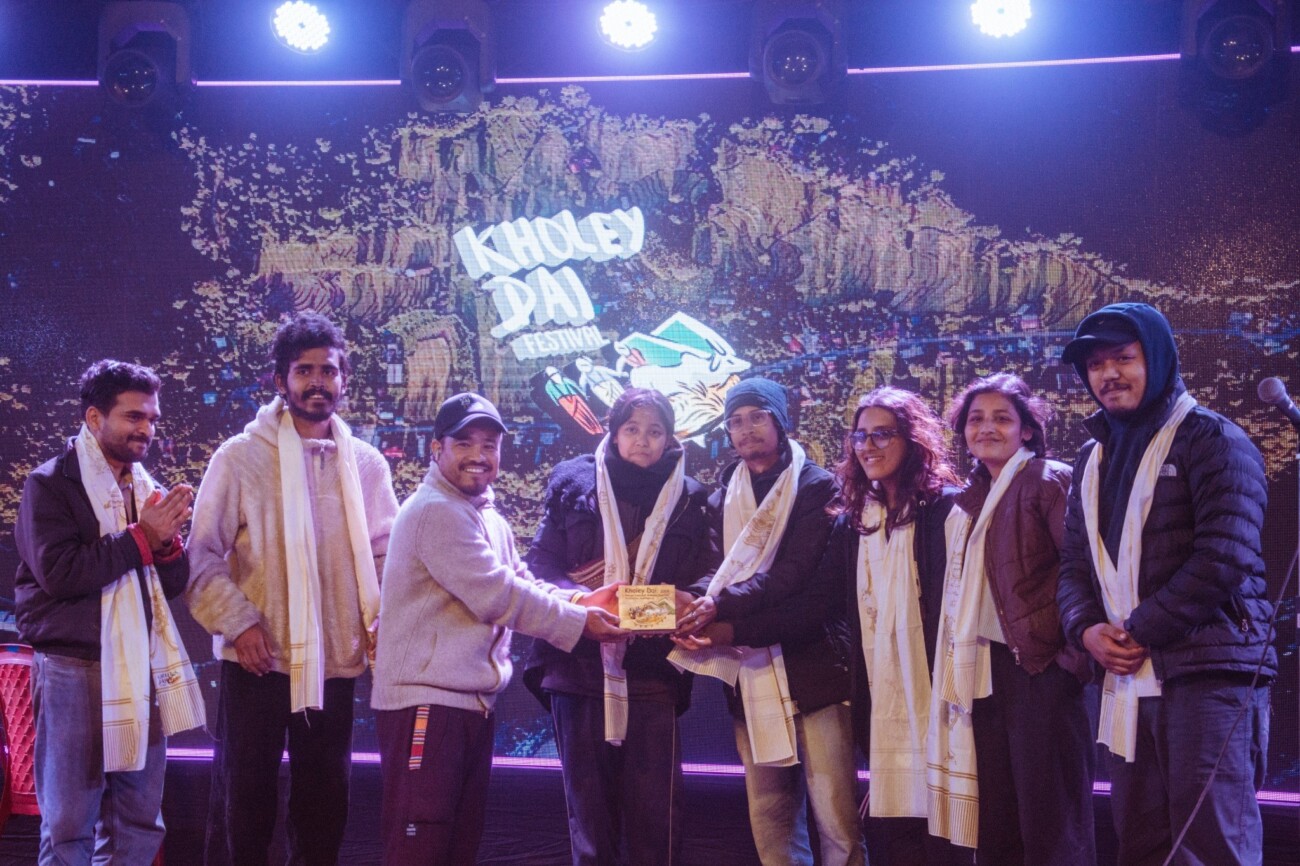
The Challenges
One of the key hurdles faced by organisers is balancing tradition with modernity, how to preserve authenticity while also making the festival appealing to large audiences.
The festival has flourished, but not without its challenges. One of the key hurdles faced by organisers is balancing tradition with modernity, how to preserve authenticity while also making the festival appealing to large audiences. Infrastructure limitations, funding constraints, and unpredictable weather conditions also pose logistical difficulties. Additionally, sustaining year-round community engagement beyond the festival days remains a challenge, requiring continuous dialogue and commitment from all stakeholders.
The Future
The Kholey Dai Festival is more than just an event; it is a living expression of a community’s resilience. It reminds us that cultural heritage is not just about preserving the past but also about adapting to change and shaping the future.
The Kholey Dai Festival is more than just an event; it is a living expression of a community’s resilience. It reminds us that cultural heritage is not just about preserving the past but also about adapting to change and shaping the future. As the festival continues to evolve, the community has ambitious plans for the future. These include fostering meaningful collaborations, expanding youth-centric programs, strengthening policy advocacy for biocultural conservation to make Parengtar a role-model village, and developing year-round community-led tourism initiatives that sustain growth beyond the festival season. For the people of Parengtar, the festival is a testament to their collective spirit—a movement that reclaims identity, nurtures resilience, and celebrates the power of community. For those seeking an experience that is both grounding and transformative, Parengtar awaits with open arms and stories waiting to be told.
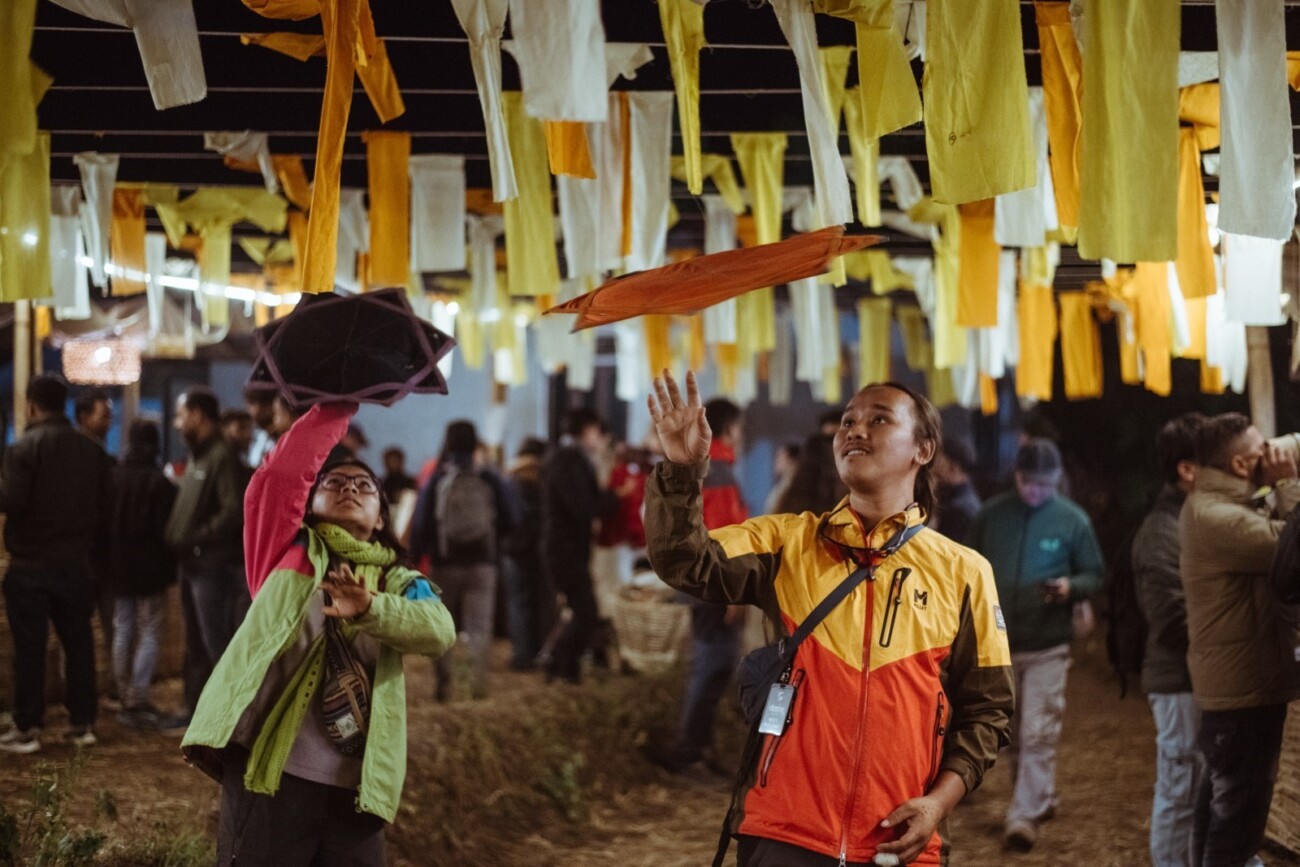
For those seeking an experience that is both grounding and transformative, Parengtar awaits with open arms and stories waiting to be told.
Acknowledging Our Partners
We are deeply grateful to our partners who continue to grow with every harvest:
Organisers: Parengtar Nawlo Umang Welfare Society, Muhaan, and Cafe Kalimpong
Design Partners: Studio Interweave, Office of Emergent Practices, and the Windhorse
Community Partners: Tag Along, Moonbeam Farmstay, Yellbong Adventure Camp, OOO Farms, Wild Harvest, Boju Store, Thikana by Mulaqat, N.V.S.E. Society, Backwoods Adventure Camp, Haven Farms, and Gauthali
Knowledge Partners: Pravah, Commutiny, DLR Prerna, The Earth Circle, One Million Leaders Asia Pacific, Nelis Global
Travel Partners: SAFAR by Mulaqat, Encamp Adventures, Blue Dragon Adventure, and Travels
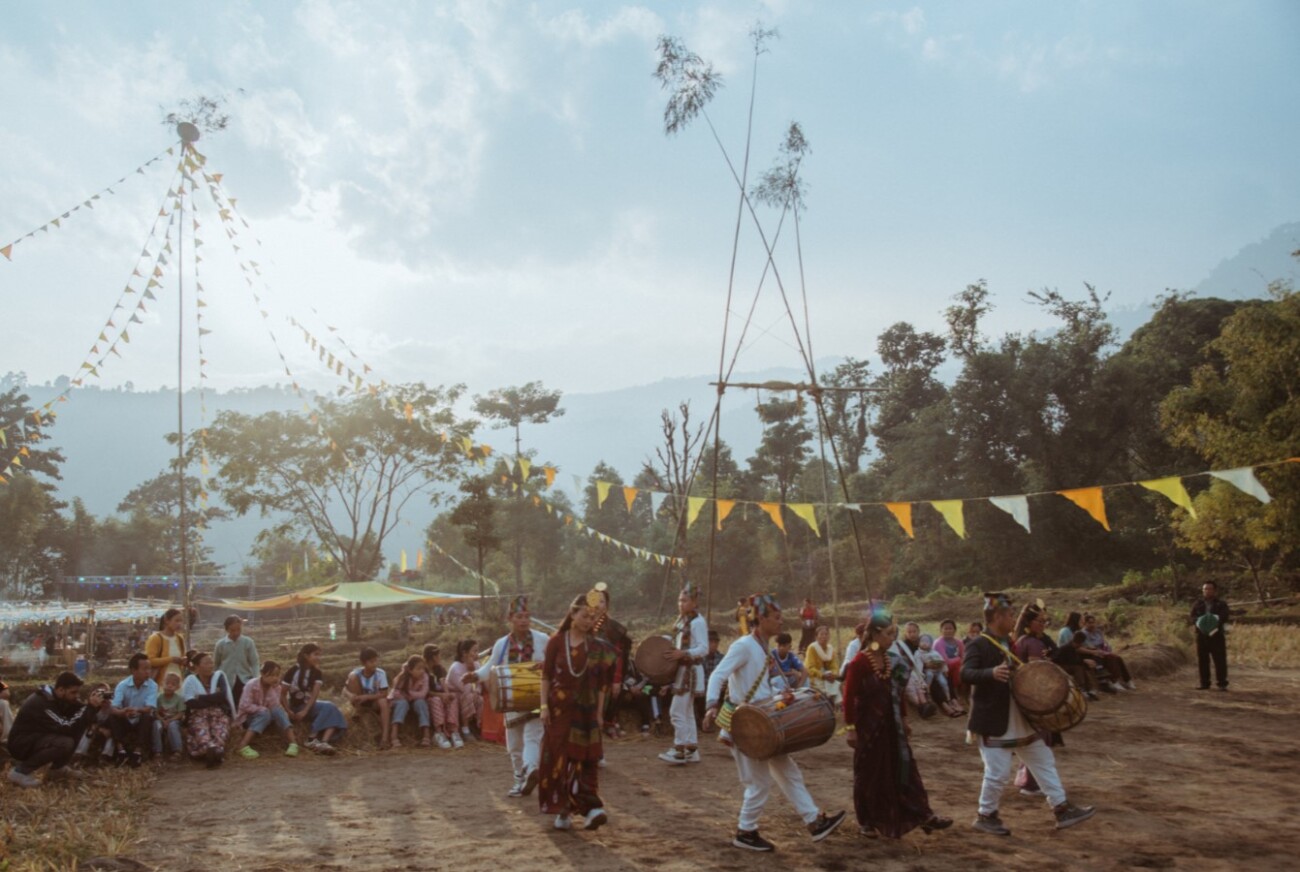
- All the photos in the article are courtesy of the Kholey Dai Festival. Some images are from the 13th-15th December 2024 Festival, while others are from different years. Our apologies for not being able to share the exact dates of the photographs.
- Glocal: Reflecting or characterised by both local and global considerations ↩︎
Nehal Raj Pradhan is a creative practitioner and development sector professional from Darjeeling. An alumnus of the Indian School of Development Management, he has worked extensively with grassroots organisations and youth-led initiatives. His passion for community building and social innovation made him found The Earth Circle, a ‘glocal’ network of diverse youth communities. With a background in permaculture, he is deeply committed to sustainability and climate action. He is also a founding partner of Muhaan, a youth collective that supports climate-vulnerable communities in the eastern Himalayas through sustainable tourism. In 2023, he received the Future Is Now – Champion of Change for Climate Action award. Currently based in Delhi, he is part of Pravah, a 30-year-old youth development organisation, where he continues to expand his leadership and creative pursuits. He is also an alumnus of the One Million Leaders- Asia Pacific Fellowship, engaging with youth-led initiatives globally.


The Kholey Dai Festival is a vibrant reflection of community spirit and cultural pride. It not only preserves traditional values and practices but also strengthens bonds among people, showcasing resilience and unity through shared celebration.
Kudos to the resilient and conscientious community of Parengtar.Their'Glocal' approach is truly inspiring. May it continue to thrive both-literally and figuratively.